Can two cinephiles ever agree on a ‘Top 10 Greatest Movies of All Time’ list?
Movies have left me spellbound since time immemorial.
From VHS, cinema theatres (the ultimate movie experience), Dolby Atmos, DVDs, downloading MP4 files, mobile phone screens to OTT platforms – Between interchangeable mediums, the magic refuses to fade.
Creating an all-time best movies list is not a casual cinephile pursuit, yet undoubtedly fun. What makes the ‘Top 10 Movies of All Time’ list and what does not, can vary every month for a movie-gobbling cinephile.
Here are the 9PM MOVIES ‘Top 10 Greatest Movies of All Time’ list.
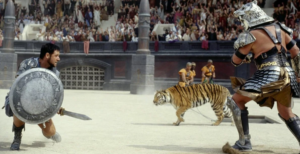
10. Gladiator (2000)
“At my signal, unleash hell.”
A weather-beaten man intently, happily follows a bird fluttering off a burnt branch. In a split second, he transforms to his chosen role, a general at a battlefield, marching on to one last battle. The first hundred dialogue-less seconds of Gladiator is exemplary storytelling minimalism. Thus begins a grand-grim atmospheric Ridley Scott action historical.
Russell Crowe breathes the humanity, tragedy and fate of a Roman general. A Shakespearean Hamlet-like assassination later, brutal gladiator fights follow, a chilling villain in young Joaquin Phoenix culminates in a theatrical, yet convincing rose-petalled, stabbing finale.
Scott excels in poetically foreshadowing the hero’s trajectory, despite familiar Hollywood Roman drama beats. The Hans Zimmer empirical score dresses it up in heroic royal satin.
Gladiator is what concentrated mix of tight drama, culmination of déjà vu Hollywood historical dialogues, big-budget production design, dark incest-hinting villainy, stunning locales and action (too gruesome at times for effect) done right looks like.
Crowe deservingly won the best actor Oscar for holding all ends together.
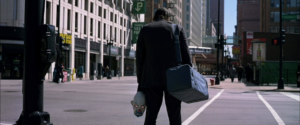
9. The Dark Knight (2008)
“I’m like a dog chasing cars, I wouldn’t know what to do if I caught one, you know, I just do…things.”
At the time of writing, The Dark Knight is the greatest superhero movie ever made.
From the foundation of the gritty-city blues world of iconic Batman comic artist and storyteller Frank Miller, rises this tense, fascinating, (thankfully linear) Christopher Nolan follow-up to Batman Begins (2005).
Heath ‘Joker’ Ledger whips up a stunning psychotic villain. Ledger cracks a tricky, fascinating, scarily realistic Joker facing off a noble, righteous, gritty Batman (Christian Bale).
A decent superhero entry, a believable love triangle, Joker’s gradual menace, gasp inducing truck overturn, BatPod skimming off the wall, a triumphant capture. That was the first half! A fascinating ‘down the rabbit hole’ second half follows.
The last line of dialogue wrapped in a poetic dark fugitive cape fade out – Almost perfect in superhero movie mythology.
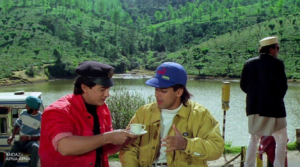
8. Andaz Apna Apna (1994)
“Shakkar dalne ka time ho gaya, sir?”
(Is it time to put in the sugar, Sir?)
Every once in a while (not too often though), a Hindi movie culminates a generation of movie cliches.
Andaz Apna Apna (Rough translation: Everyone Has Their Own Style) is a madcap spoofy action comedy. A box office flop on release, the movie steadily gained cult status through satellite TV telecasts and DVD. Thirty years on, it is an impossible-to-repeat laugh fest.
Director Rajkumar Santoshi aces once-in-a-lifetime funny stereotypes of every Hindi film cliché out there. The mad, unbelievable thing – Almost every line works, 99.99% of the jokes spurt like overpowered water fountains.
Every Andaz Apna Apna watch leads to discovering-rediscovering LOL side gags, apart from the hilarious main gags.
In retrospect, Paresh Rawal tops the cast with his good brother-evil brother act. Aamir Khan is raw, but spontaneous and spot on. Salman Khan is fortunately well cast as the lovable buffoon. Raveena Tandon and Karishma Kapoor are good, as is the supporting cast, especially the underrated Viju Khote, Shakti Kapoor and Shehzad Khan.
The free-flowing clowning spirit of Andaz Apna Apna is universal. Indian cinema audiences will relish the jokes more. But for the sheer marathon mad fun on every watch, couldn’t keep it off the ‘best movies of all time’ list.
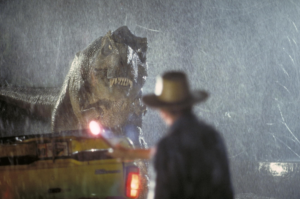
7. Jurassic Park (1993)
“…but your scientists were so preoccupied with whether or not they could that they didn’t stop to think if they should.”
I recently re-watched this sci-fi action adventure. The impact almost matched that first jaw dropping childhood theatre experience.
Man tampering with nature and getting screwed is no new theme. But director Steven Spielberg, screenplay writers Michael Crichton (also original book author) and David Koepp weave a balanced, intelligent action thriller.
I didn’t think twice about Velociraptors opening doors, or that the mighty Tyrannosaurus rex can only sense (and not clearly see?!) moving prey, because the context is set up beautifully in the opening minutes, before the disaster movie beats go off.
The Michael Kahn editing ensures a speedy, satisfying finish. Who can forget how the stunning John Williams score powers the splendid visuals. The visual effects were spectacular for their time, they still hold.
Spielberg uncannily gets the cast right always, can’t think of anyone else but Richard Attenborough, Sam Neill, Laura Dern and Jeff Goldblum for the lead roles.
Not one of the subsequent franchise movies have matched the magic of the first. Jurassic Park (1993) remains the sci-fi action-adventure gold standard.
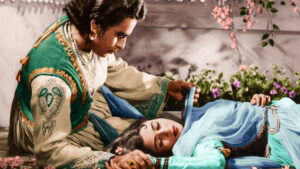
6. Mughal-e-Azam (1960)
“Mera dil bhi apka koi Hindustan nahi… jis par aap hukumat kare.”
(“My heart is not your India…that you can rule over it.”)
Mughal-e-Azam remains an unforgettable memory for many cinephiles.
Alpha father vs prince son and his dancing lover. Six decades on, no Hindi film historical musical has come close to matching the grandeur, performances, soundtrack, dialogues, costumes, dance sequences of this lavish, yet grounded period drama.
Originally released in black and white, Mughal-e-Azam (The Great Mughal) retains its magnificence. This speaks volumes for the painstakingly detailed art direction, cinematography and sharp uncompromised execution.
The five-minute lavish mirror-flooded colour song sequence ‘Pyar kiya to darna kya’ is just wow. The war scenes featuring a rampaging elephant, the sensuous feather scene, powerhouse dialogues, Mughal-e-Azam remains epic in staggering effort and frames.
The complete colour version release (2004) seemed forced at first, with director K. Asif (1922-1971) long gone. We have got used to it over the years.
This rates as, arguably, Dilip Kumar’s best acting performance as the rebellious prince. Madhubala is beauty and talent personified as the alluring, defiant courtesan. Prithviraj Kapoor as the mighty Mughal king Akbar has inspired mimics and comic artists for generations – The commanding baritone shaking with emotions, power and a surprising vulnerability.
The Mughal-e-Azam dialogues (Aman, Kamal Amrohi, K. Asif, Wajahat Mirza, Ehsan Rizvi) and exquisite music (Naushad) are its veins, throbbing with a timeless dignity.

5. Princess Mononoke (1997)
“You cannot change fate. However, you can rise to meet it, if you so choose.”
Stunning, mostly enriched-in-gorgeous-detail hand-drawn animation, this Hayao Miyazaki masterpiece woke me up from years of Disney cuteness and sophistication.
Princess Mononoke is a remarkably non-judgmental observant sweep of human being vs nature, madness vs reason, selfishness vs selflessness.
There are no clearly positioned heroes and villains. Even the heroic protector Ashitaka is spurred by hoping to undo a deadly curse.
Lady Eboshi rules Iron Town, mercilessly clearing forests, while sheltering lepers and outcasts in manufacturing iron and firearms. San or Princess Mononoke is like what Rudyard Kipling’s Mowgli would have been, in a bitter fight against humankind’s ravaging greed.
Miyazaki’s paints with strong strokes of compassion, making Princess Mononoke an unforgettable cautionary tale for all ages and audiences.
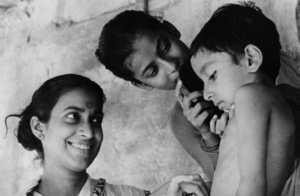
4. Pather Panchali (1955)
“Can’t an old woman have wishes too?”
I am tempted to put almost every Satyajit Ray I have seen in the top ten list. So cinematically airborne are his movies. As “seeing the moon or sun,” Akira Kurosawa said of Ray’s works—Can’t agree more.
Pather Panchali (Song of the Little Road) is like vividly revisiting a lost childhood. Pains, pleasures and tragedy follow. Ray had earlier worked on the illustrations for the children’s version of Bibhutibhushan Bandopadhyay’s 1929 Bengali novel of the same name.
Ray captures moments like there was no other manner to capture them – From the iconic train chasing scene to a muted death cry, scored intelligently by Sitar legend Ravi Shankar.
The humanism is what makes Ray’s cinema timeless. Despite the rural setting, simple pleasures, sidelined by looming poverty, Pather Panchali exudes honeyed sunshine in black & white.
Pure cinema classic, one for the ages.
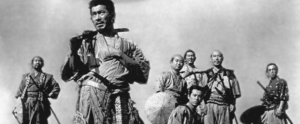
3. Seven Samurai (1954)
“This is the nature of war: By protecting others, you save yourselves.”
Poor farmers want to protect their next harvest from rampaging dacoits. Short of money, and since recruitment websites and the Internet were not yet invented, they plan to hire needy samurai for the job.
Seven Samurai is the granddaddy of influential movies. The buddy movie, hiring vigilante movie, dacoit vs village movie, good vs evil flick, deranged villain movie, the buddy/vigilante cowboy westerns, the horse-neighing action-adventure genre.
All genres mentioned above owe their origins to this sweeping 207-minute Akira Kurosawa action samurai spread.
Watch how Kurosawa uses varied human expressions as poetic movements without going for close-ups. Faces were the legendary Japanese director’s constantly altering, arresting canvas. I haven’t seen a director transmit the spirit of stage theatre and composition as effectively in a long, long time.
The painstaking realism of the action sequences, flowing dialogues, multi-cameras immerse us into the heart of a scene. Seventy odd years on, Seven Samurai towers as a mountainous cinematic achievement.
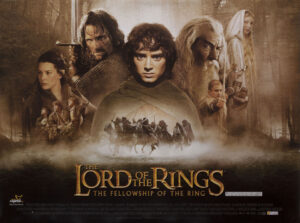
2. The Lord of the Rings: The Fellowship of the Ring (2001)
“All we have to decide is what to do with the time that is given to us.”
LOTR remains the staggering cinematic achievement of this century.
Why?
Peter Jackson’s ‘impossible-to-film’ movie trilogy based on J.R.R. Tolkien’s magnificent fantasy fiction was pitted to fail, on paper.
In multiple re-watches, the first of the trilogy – The Fellowship of the Ring, holds a special place. Despite major book-to-screenplay trimmings, it radiates the beloved book’s spirit. Melding special effects and CGI without hampering atmosphere, is now a celebrated Peter Jackson quality.
The mammoth production design and art direction often outdo the lofty expectation standards. Cinema immortality is ensured for Peter Jackson. He pulled off a miraculous fantasy adventure trilogy of a standard no one has been able to match, let alone surpass.
Peter Jackson, you bow to no one.
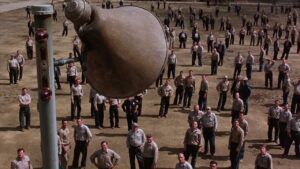
1. The Shawshank Redemption (1994)
“These walls are funny. First you hate ’em, then you get used to ’em. Enough time passes, you get so you depend on them. That’s institutionalized.”
What does prison do to people? Why doesn’t authority have any boundaries? Why do those in authority ultimately wield merciless, ruthless power?
For sheer payoff, there is nothing as satisfying as director-screenplay writer Frank Darabont’s lovely prison life slow burn. Based on a Stephen King novella, The Shawshank Redemption is simply about how we react to life.
Tim Robbins and Morgan Freeman’s crackling chemistry is the story’s soul, Freeman’s monologuing is cinema narration gold.
There is no patronizing, no forced motivational messages, no life-affirming pep talk. Everything uttered is true to character and context. That is why, “I guess it comes down to a simple choice, really. Get busy living, or get busy dying,” doesn’t seem preachy. It sounds alarming at that point in the story.
There aren’t many dramas that are as gently powerful as The Shawshank Redemption.
Good life-affirming movies had been made before The Shawshank Redemption. But the humanity, wit and ultimate victory-against-all-odds take is the most relatable and heartfelt than most movies of the genre. It’s like we are in the prison with Andy Dufresne, Red and company.
Are we also, in a way, caged in the prisons of our own making?
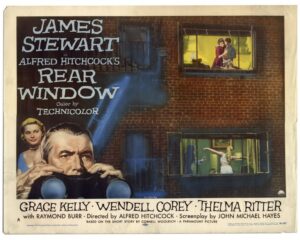
Afterword
The movies that didn’t make the top ten, but could easily have made it. Here we go:
Alfred Hitchcock conjured wonderful, riveting crime-suspense dramas, notably Psycho (1960) and Rear Window (1954).
Ray’s brilliance in the follow up to Pather Panchali, the famed Apu trilogy – Aparajito (1956) and Apur Sansar (1959), could make any of our top ten movie lists, anytime.
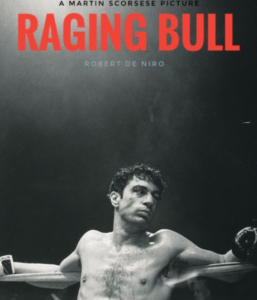
A knockout top ten candidate: Easily Martin Scorsese’s best, the downfall of a furious boxer in telling black & white. An unforgettable Robert De Niro in Raging Bull (1980).
Krzysztof Kieślowski’s Three Colours trilogy – Blue (1993), White (1994) and Red (1994) remain creatively original.
A breathtaking gem. Cinema Paradiso (1988), writer-director Giuseppe Tornatore’s unparalleled stunning ode to big screen cinema-watching and coming-of-age.
The Matrix (1999) remains the scarily believable sci-fi dystopia of our times.
Citizen Kane (1941): Directed by Orson Welles, considered one of the greatest in cinema history for its innovative screenplay and cinematography.
The Godfather (1972) – Francis Ford Coppola’s mafia epic is renowned for its serene frames, powerful storytelling, iconic performances, melancholic-majestic score .
Schindler’s List (1993) – Steven Spielberg’s powerful portrayal of the Holocaust is a masterpiece of filmmaking and a moving tribute to empathy the human spirit.
Gone with the Wind (1939) – Epic historical romance, known for its lavish production and iconic characters. Holds, despite the marathon runtime.
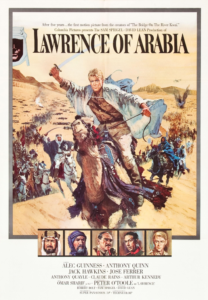
Lawrence of Arabia (1962) – David Lean’s magnum opus, probably the best character study of a real-life personality on cinema.
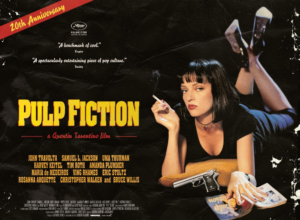
Pulp Fiction (1994) – Quentin Tarantino arrived with this nonlinear crime drama, seduced us with long engaging conversations, dipped us in irreverence. Violence in bold, inspired streaks, and a signature narrative structure.
Star Wars: Episode IV – A New Hope (1977) – George Lucas’s fresh, entertaining space opera introduced audiences to a galaxy far, far away and became a cultural phenomenon.
The Wizard of Oz (1939) – The beloved Victor Fleming-directed classic has captivated audiences for generations with its magical story, red shoes and iconic characters.
The Lord of the Rings: The Return of the King (2003) – Peter Jackson’s epic conclusion to the Lord of the Rings trilogy hasn’t been surpassed for sheer scale and ‘epicness’ this century. Yet.
Spirited Away (2001) – Directed by hand drawn animation godfather Hayao Miyazaki, this animated Studio Ghibli lore is quite simply a spellbinding masterpiece.
2001: A Space Odyssey (1968) – Stanley Kubrick’s science fiction masterpiece is iconic for its visual effects, background score and philosophical themes.
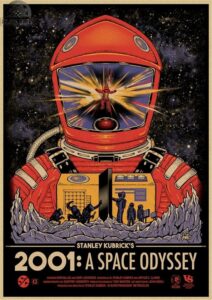
What is your ‘Top 10 Greatest Movies of All Time’ list?
Do share in the comments section.
(Article by Snehith Kumbla)
It’s always subjective to create such a list, but I agree with some of the choices mentioned. I particularly enjoyed films like Gladiator and The Dark Knight. It’s fascinating how movies can captivate us and leave a lasting impact. My favorite movie is probably Inception though 😊
Constantly fascinating, yes!
Way cool! Some very valid points! I appreciate you penning this
write-up and also the rest of the website is also very good.
Thanks Robert! Cheers to the magic of movies!